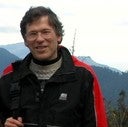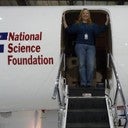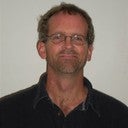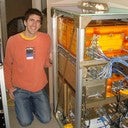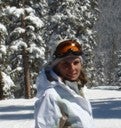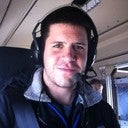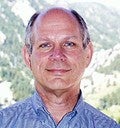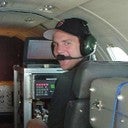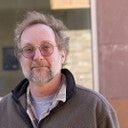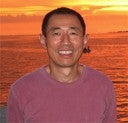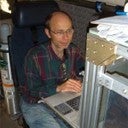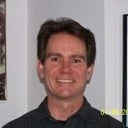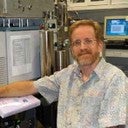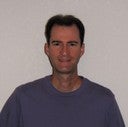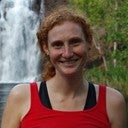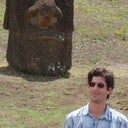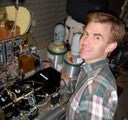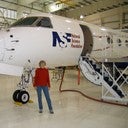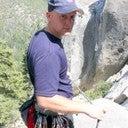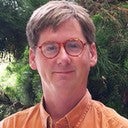HIPPO Research Scientists
Harvard University
University of Miami
Princeton University
National Center for Atmospheric Research (NCAR)
National Oceanic and Atmospheric Administration (NOAA)
- James Elkins
- David Fahey
- Ru-Shan Gao
- Eric Hintsa
- Ben Miller
- Steve Montzka
- David Nance
- Anne Perring
- Joshua Schwarz
- Ryan Spackman
- Laurel Watts
Scripps
Harvard University Scientists
Steve Wofsy: Harvard University
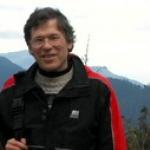 Lead Principal Investigator
Lead Principal Investigator
Steve began his studies of the atmosphere after finishing his PhD in molecular physics, in 1971. He has long been interested in understanding how the chemical composition of the atmosphere is affected by the biology, chemistry and physics of the earth's soils, oceans, and air. During his career he has made measurements and constructed computer models to help understand many different aspects of this broad problem, including measurements in the stratosphere, across North America, and at forest sites from Manitoba to equatorial Brazil.
In 2004, a group of us came together to plan the program now known as HIPPO. The idea was to acquire detailed cross sections of the atmosphere in order to visualize its chemical structure in fine detail, at all spatial scales from 100m to global. HIPPO is intended to bridge the gap between small-scale aircraft data and satellite data, which has global scale but low resolution (almost no resolution in the lowest altitudes, the most sensitive to image sources of greenhouse gases). We are using the NSF HIAPER aircraft, a modified GV, which has unique capability in the world to construct this very detailed picture. The goal is to define the source regions, and to quantify the input fluxes, for the most important greenhouse gases and for many other trace gases in the atmosphere.
Roisin Commane: Harvard University
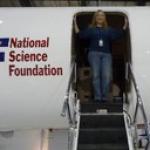 Instrument Monitored: QCLS
Instrument Monitored: QCLS
Roisin is a post-doc with the Wofsy group, currently involved in the development of QCLS instruments to measure trace gases. She obtained her BSc at University College Dublin in Ireland before moving to Leeds, UK where she recently completed her PhD in atmospheric chemistry at the School of Chemistry, University of Leeds, UK with Prof. Dwayne Heard and Dr. Mat Evans. During her time at Leeds, she developed and deployed instruments based on laser-induced fluorescence techniques to measure radical oxidants (OH, HO2, IO) in the troposphere on aircraft and ship platforms, as well as at stationary ground sites.
Bruce Daube: Harvard University
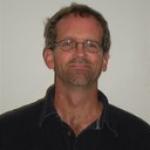 Mission Scientist / Instrumentation Engineer
Mission Scientist / Instrumentation Engineer
Instruments Monitored: QCLS & CO2
Bruce is the Head Research Engineer in the Wofsy Group at Harvard University. Prior to joining the group, he received a BSME from Worcester Polytechnic Institute in Worcester, MA, and a MSME from the California Institute of Technology in Pasadena, CA. At Caltech, he was involved in the development and deployment of several systems for the automated collection of cloud water, rain water, and aerosols. Since returning to New England in 1990, he has designed instrumentation for and participated in numerous worldwide flight campaigns on a variety of aircraft, including the NASA ER-2, WB-57F, University of Wyoming King Air, UND Citation II, Aurora Perseus A, Lear35A, NSF/NCAR GV, and high altitude balloons. For HIPPO, he is supporting the QCLS and CO2 instruments.
 Watch a video narrated by Bruce Daube on how the
Watch a video narrated by Bruce Daube on how the
CO2 instrument operates on the HIPPO campaign.
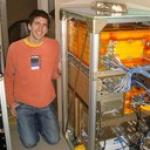 Instruments Monitored: QCLS & CO2
Instruments Monitored: QCLS & CO2
Eric is a graduate student in applied physics with Steve Wofsy at Harvard University. His research interests are centered on the study of greenhouse gases, their atmospheric concentrations and distributions, and key processes driving current trends in these trace gases. Eric is engaged in multiple efforts to improve our knowledge of these key atmospheric constituents; including the development of new instrumentation, in-situ atmospheric measurements, and data-model studies. For HIPPO, he works with two instruments onboard the aircraft, the CO2 and QCLS instruments, which measure carbon dioxide (duplicated), methane, nitrous oxide, and carbon monoxide.
Jasna Pittman: Harvard University
 Instruments Monitored: QCLS & CO2
Instruments Monitored: QCLS & CO2
Jasna Pittman is a research scientist in the Wofsy group at Harvard University. Prior to joining the Wofsy group, she did analysis of aircraft and satellite data in the Atmospheric Chemistry Division at NCAR. She completed her Ph.D. in Atmospheric Sciences under the guidance of Dr. Jim Anderson and Dr. Elliot Weinstock at Harvard University. While in graduate school, she worked with aircraft instruments and participated in several aircraft campaigns that primarily sampled the tropopause region (10-15 km above ground). Understanding the processes that affect the chemical composition of the lower atmosphere is critical for accurately forecasting changes in the climate system. Thus, performing measurements of key gases such as carbon dioxide (CO2), methane (CH4), carbon monoxide (CO), and nitrous oxide (N2O), comparing aircraft to satellite measurements, and modeling aircraft measurements to test our understanding of how the atmosphere works are among her main interests.
Greg Santoni: Harvard University
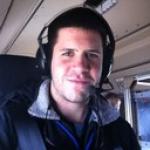 Instruments Monitored: QCLS & CO2
Instruments Monitored: QCLS & CO2
Greg is a graduate student in atmospheric chemistry with Steve Wofsy at Harvard University where his research focuses on measurements and modeling of long-lived greenhouse gases (GHGs). To that effect, he has worked on the development of instrumentation to measure CO2, N2O, and isotopes of CH4, and combined aircraft-based measurements of these compounds with transport models to relate source locations to observed concentrations, thereby improving estimates of regional GHG emission rates.
 Bin obtained her PhD degree in Atmospheric Chemistry this summer from the Dept of Environmental Health Sciences, State University of New York at Albany, under the supervision of Dr. Lei Zhu. Her PhD work is focused on the gas-phase photolysis of secondary organic pollutants, unsaturated dicarbonyls in particular. The major technique used in the lab is Cavity Ring-Down Spectroscopy (CRDS) combined with laser photolysis. Some of our results suggested that atmospheric photolysis competes or supersedes the OH radical reaction in the removal of these pollutants. Bin joined the Wofsy's group in Harvard University this August as a postdoctoral fellow. She is currently involved in the instrument development on laser spectroscopy and field measurements of greenhouse gases
Bin obtained her PhD degree in Atmospheric Chemistry this summer from the Dept of Environmental Health Sciences, State University of New York at Albany, under the supervision of Dr. Lei Zhu. Her PhD work is focused on the gas-phase photolysis of secondary organic pollutants, unsaturated dicarbonyls in particular. The major technique used in the lab is Cavity Ring-Down Spectroscopy (CRDS) combined with laser photolysis. Some of our results suggested that atmospheric photolysis competes or supersedes the OH radical reaction in the removal of these pollutants. Bin joined the Wofsy's group in Harvard University this August as a postdoctoral fellow. She is currently involved in the instrument development on laser spectroscopy and field measurements of greenhouse gases
.Princeton University Scientists
Mark Zondlo: Princeton University
 Instrument Monitored: VCSEL
Instrument Monitored: VCSEL
Professor Zondlo's group conducts research in global climate change and air quality by deploying novel optical sensors in the atmosphere and analyzing the data as part of field campaigns on local to global scales. Water vapor and ammonia are examples of two important trace gas species that are critical to aerosol and cloud particle processes. Recent advances in laser-based sensors allow for unprecedented capabilities to observe these and other trace gases in the atmosphere. Instrumentation developed in the laboratory is deployed as part of international field experiments on aircraft-, network-, and ground-based platforms. Specific research areas include cloud and aerosol particle formation, trends and distribution of water vapor in the atmosphere, and emissions of greenhouse gases to the troposphere.
University of Miami Scientists
Elliot Atlas: University of Miami
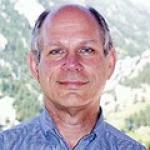 Instrument Monitored: Whole Air Sampler
Instrument Monitored: Whole Air Sampler
Dr. Atlas' research interests are in the sources, transport, and transformation of atmospheric trace gases in the global atmosphere. This work has a primary focus on trace gases and aerosols associated with the formation and destruction of ozone in the atmosphere. The research involves development and application of advanced trace gas sampling and measurement techniques. His research group investigates the distributions and trends of a large variety of halocarbons (both natural and man-made), hydrocarbons, and photochemical oxidation products of these species (such as organic nitrates). The research extends from studies of sub-surface distribution of trace gases in the polar firn record to studies of urban and regional chemical distributions of short-lived tropospheric gases to measurement of halocarbons in the stratosphere up to 32 km altitude. The research platforms include tropospheric and stratospheric aircraft (C-130, P-3B, ER-2, WB-57), high altitude balloons, oceanographic research ships, and land and island-based experiments. New work at RSMAS will develop techniques to examine the organic content of aerosol particles to investigate the formation and chemistry of secondary aerosol products and their impact in the global atmosphere.
NCAR Scientists
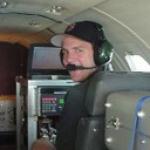 Co-Principal Investigator
Co-Principal Investigator
Instruments Monitored: AO2 & MEDUSA
Britt Stephens is a Scientist III in the Earth Observing Laboratory (EOL) of NCAR. Britt received a Bachelor's degree in Earth and Planetary Sciences from Harvard in 1993 and a Ph.D. in Oceanography from the Scripps Institution of Oceanography in 1999. His research has focused on developing and deploying new instruments for tower, ship, and aircraft-based observations of atmospheric O2 and CO2, and on synthesizing data sets and models to elucidate global carbon cycle processes. The motivation for his work lies in our need to better understand how the Earth's biogeochemical systems, such as forests and ocean regions, respond to natural and human-induced perturbations, so that we may more accurately predict and more effectively mitigate future climate change.
Britt recently completed a synthesis of aircraft CO2 observations and predictions of global atmospheric models, and authored a /Science/ paper on this work. This study implied a major revision to the conventional view of the global carbon cycle, and specifically that the apparent northern terrestrial missing carbon sink may instead be found in the tropics.
Britt is now participating in an ambitious global airborne field campaign, the HIAPER Pole-to-Pole Observations of Carbon Cycle and Greenhouse Gases Study (HIPPO), to further explore the global distribution of carbon sources and sinks. Among the full payload of advanced HIPPO instruments, Britt will operate two systems which he developed at NCAR - the airborne O2 analyzer (AO2) and the MEDUSA flask sampler - during 5 missions over the next 3 years, collecting the first comprehensive observations of the vertical and latitudinal distributions of atmospheric O2, CO2, and other gases.
Instruments Monitored: AO2 & MEDUSA
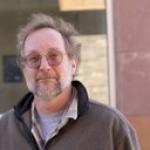 Andy started with EOL in 2004 as an instrument technician charged with building a state of the art oxygen and carbon dioxide calibration facility. He continues to operate this facility but also found time to build the Airborne Oxygen (AO2) instrument and much of the MEDUSA flask sampler. After a brief hiatus with NCAR's High Altitude Observatory, Andy returned to RAF to help operate and maintain these two instruments. Andy is excited to be back in the field and looks forward to providing support to the HIPPO campaigns. Andy also maintains an array of ground-based carbon dioxide monitoring equipment located at various sites around the Rocky Mountain west.
Andy started with EOL in 2004 as an instrument technician charged with building a state of the art oxygen and carbon dioxide calibration facility. He continues to operate this facility but also found time to build the Airborne Oxygen (AO2) instrument and much of the MEDUSA flask sampler. After a brief hiatus with NCAR's High Altitude Observatory, Andy returned to RAF to help operate and maintain these two instruments. Andy is excited to be back in the field and looks forward to providing support to the HIPPO campaigns. Andy also maintains an array of ground-based carbon dioxide monitoring equipment located at various sites around the Rocky Mountain west.
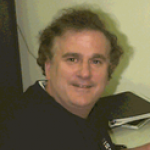 Co-Principal Investigator
Co-Principal Investigator
James W. Elkins was raised in McLean, VA, a suburb of Washington, DC. He attended McLean High School, a public high school specializing in education of the sciences. It was there that he developed his interest in science by participating in science fairs and national science competitions, including receiving Ford Future Scientists of America and the Westinghouse Science Talent Search (honors group) awards. He attended the University of Virginia where Professor Hugh P. Kelly, a leading expert on atomic physics and provost of the University, was his advisor. He received his Bachelor's degree in physics with high distinction in 1974. His interest in the atmospheric sciences increased while working as a summer student in 1974 under Drs. Hans Mayr and Jay Herman at NASA's Goddard Space Flight Center in Greenbelt, MD in the Laboratory of Planetary Atmospheres. He received a research scholarship and attended graduate school in the Division of Applied Physics and Engineering at Harvard University. He studied atmospheric physics under Professor Michael B. McElroy, a pioneer in the studies of global warming and the depletion of stratospheric ozone. After receiving a Master's degree in science in 1975, he worked on the atmospheric source of nitrous oxide from the ocean as his thesis topic. He received his Ph.D. in applied physics in 1978. He was a research fellow in aquatic chemistry from 1978 through 1979 under Professors McElroy and Steven C. Wofsy.
 Instruments Monitored: Ozone & SP2
Instruments Monitored: Ozone & SP2
In situ measurements of trace gases and aerosols in the upper troposphere and lower stratosphere, the interpretation and modeling of measurements for understanding of atmospheric photochemical and transport processes, the design and construction of aircraft instrumentation for atmospheric measurements, and the evaluation and presentation of scientific results in national and international assessments.
 Instruments Monitored: Ozone & SP2
Instruments Monitored: Ozone & SP2
Ru-Shan is a research physicist in NOAA's Earth System Research Laboratory in Boulder. Colorado, USA. His principal research interests are 1. The measurement of trace gases and aerosols in the troposphere and lower stratosphere using instruments on board research aircraft, and 2. Interpretive studies addressing stratospheric ozone depletion, the photochemistry of nitrogen oxides, the formation of nitric acid containing aerosols, and the role of black carbon aerosol in climate. Ru-Shan has participated and served as Principal Investigator for a variety of instruments on a number of airborne sampling missions with research aircraft. Ru-Shan is considered by his colleagues to be a Master Craftsman who is outstanding at creating one-of-a-kind scientific devices for laboratory and field instruments.
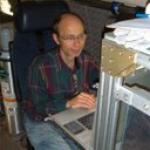 Instrument Monitored: UCATS
Instrument Monitored: UCATS
After receiving his doctorate in physical chemistry, Eric Hintsa entered the world of atmospheric science in 1990, building and flying instruments on the ER-2 high altitude aircraft. He then studied chemistry in the marine boundary layer at Woods Hole Oceanographic Institution, followed by a stint as the Director of the Atmospheric Chemistry Program at the National Science Foundation, before coming to NOAA in 2009. He is now back to studying chemistry and dynamics of the stratosphere and troposphere, using the UCATS instrument on the GV during HIPPO. He missed the most recent HIPPO flight series (spring 2010) because UCATS was otherwise occupied with the GloPac mission on the Global Hawk UAS, and is looking forward to the next sets of flights in 2011.
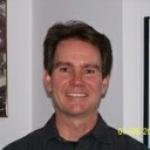 Instrument Monitored: Whole Air Sampler
Instrument Monitored: Whole Air Sampler
Ben joined the HATS group in early 2008, having moved from La Jolla where he had worked for nearly 18 years at the University of California, San Diego, developing in situ GCMS field instruments and primary standard calibration techniques with the Advanced Global Atmospheric Gases Experiment. He now works with Steve Montzka and others in a collaboration with the Carbon Cycle Greenhouse Gases group to study the abundances, trends, sources and sinks of about 40 halocarbons, hydrocarbons and other trace atmospheric compounds by GCMS from automated flask sampling packages acquired at the CCGG aircraft and tower sites. Ben is assisting in the logistics, sampling, analysis and interpretation of the NWAS and AWAS flask packages that are taken aboard HIPPO.
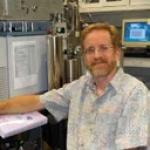 Instrument Monitored: Whole Air Sampler
Instrument Monitored: Whole Air Sampler
From 1989 to 1991, Montzka worked as a postdoctorate researcher studying how plant-produced volatile organic compounds were involved in the generation of rural haze and tropospheric ozone. A few years later, Montzka and his NOAA colleagues hit another scientific high: Documenting a drawdown in the global atmospheric concentration of ozone-depleting substances a direct consequence of a 1987 international treaty, the Montreal Protocol on Substances that Deplete the Ozone Layer, and its amendments.
Since then, the researcher has been involved in groundbreaking measurements of 100-year-old air trapped in Antarctica’s snow— which revealed an atmosphere remarkably free of industrial ozone depleting substances. He helps with aircraft missions that soar into the stratosphere to measure ozone-depleters directly in the environment in which they wreak havoc. And Montzka and his colleagues have been able to take advantage of policy decisions” the mandated end of most methyl chloroform production, for example to gain insight into fundamental atmospheric processes.
Today, he continues to track trace atmospheric chemicals along with his colleagues in the halocarbons research group, especially chemicals that are substitutes for ozone-depleting substances. Some of those chemicals are milder ozone depleters, and others are potent greenhouse gases— so Montzka is collaborating increasingly with ESRL's carbon cycle and greenhouse gas experts.
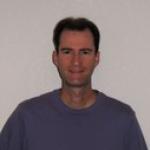 Instrument Monitored: Whole Air Sampler
Instrument Monitored: Whole Air Sampler
David is a research assistant with the Halocarbons And other Trace Species (HATS) group of NOAA/ESRL's Global Monitoring Division (GMD). Since joining in 1999, he has been primarily involved in working with GC-ECD data from the ground-based, flask and in situ networks of GMD sites. He has also played a supporting role in several airborne measurements field campaigns over the years. During HIPPO, he is providing ground support in Boulder, Anchorage, and Christchurch for Dr.Fred Moore and the PANTHER, UCATS, NWAS and AWAS instruments.
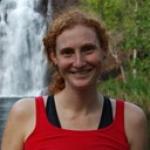 Instrument Monitored: SP2
Instrument Monitored: SP2
Anne works in Dave Fahey's group in the NOAA Earth Systems Research Laboratory - Chemical Sciences Division. During HIPPO she is working with the Single Particle Soot Photometer (SP2) which can provide black carbon (BC) mass loadings as well as particle size and coating state. BC particles are an interesting subset of atmospheric aerosol because they absorb light and can therefore have significant radiative impacts. Despite this importance relatively little is known about the atmospheric lifetime, transport of and ultimate fate of BC aerosol. The HIPPO mission is an exciting opportunity to look at levels of BC in the remote atmosphere and polar regions. The observations can be used to investigate the characteristics of aged black carbon aerosol and its long-term behavior and also to validate global and regional models which are crucial for predicting global impacts of anthropogenic activities.
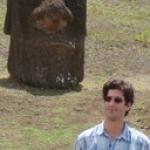 Instrument Monitored: SP2
Instrument Monitored: SP2
Joshua Schwarz has been working with the Single Particle Soot Photometer (SP2) since 2004. He has played a leading role in characterizing this powerful addition to traditional measurements of aerosol black carbon and applying it to measurements in North America, the Tropics, and China, and from the surface to the lower stratosphere. His publications include technical manuscripts about the SP2 as well as scientific results and implications of these measurements. He led the NOAA SP2 instrument involvement in the first HIPPO campaign -- configuring the instrument for operation in the NSF/NCAR GV, flying the entire route of the GV with the instrument to ensure its proper operation and correct calibration, and finalizing and analyzing its data products. Presently he is preparing a manuscript centered around a comparison between black carbon aerosol in Aerocom global models and the SP2 observations during HIPPO I.
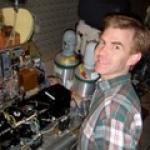 Instruments Monitored : Ozone & SP2
Instruments Monitored : Ozone & SP2
Ryan is a research scientist at NOAA in Boulder, Colorado and will be flying on the GV aircraft for the second phase of the HIPPO mission leading the operation of the Single Particle Soot Photometer (SP2) and NOAA Ozone instruments. Since his first field experience in the Azores in 1995 launching ozonesondes, he continues to follow his interests in conducting atmospheric measurements of trace gases and aerosols, mostly aboard research aircraft. His broader interests include collaborating with scientists who model these species to better understand the coupling between chemistry, dynamics and radiation in the atmosphere. Atmospheric observations are crucial to testing global models that scientists use to predict the evolution of greenhouse gases and aerosols that have impacts on climate.
 Watch a video as Ryan Spackman explains why it is important
Watch a video as Ryan Spackman explains why it is important
to sample the atmosphere over sea-ice and open leads.
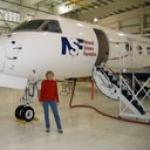 Instruments Monitored: Ozone & SP2
Instruments Monitored: Ozone & SP2
Laurel is the instrument programmer for the Atmospheric Composition and Chemical Processes (ACCP) Group at NOAA. She has a BS (Biochemistry) and MS (Chemical Engineering) from the University of Maine, and a PhD from the Colorado School of Mines in Chemical and Petroleum Refining Engineering. Laurel has worked for over 20 years at NIST making laboratory phase equilibria measurements before retiring to work full time as a programmer at NOAA. She does the programming for the instruments, and has worked in the integration of the Ozone and SP2 into the GV aircraft for all of the HIPPO campaigns.
Laurel grew up in a small fishing village in Maine, and came to Colorado to work at NIST. She has three children, two attending University of Colorado and one at Front Range Community College. She's an avid runner, and does quilting as a hobby.
Scripps Scientists
Jonathan Bent: Scripps Institution of Oceanography
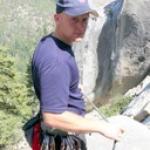 Instruments Monitored: AO2 & MEDUSA
Instruments Monitored: AO2 & MEDUSA
Jonathan Bent is a doctoral student at Scripps Institution of Oceanography in San Diego, California. He studies atmospheric chemistry under Ralph Keeling. Jonathan has worked on the START08, HIPPO Phase I and HIPPO Phase II campaigns, and operates the AO2 and MEDUSA instrument.
Ralph Keeling: Scripps Research Institute
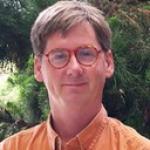 Co-Principal Investigator
Co-Principal Investigator
Instrument Monitored: MEDUSA
Ralph Keeling is the current program director of the Scripps CO2 Program. He is also a Professor and the Principal Investigator for the Atmospheric Oxygen Research Group at Scripps Institution of Oceanography
